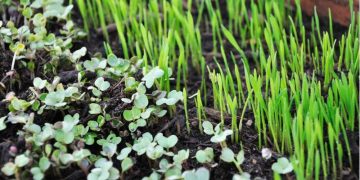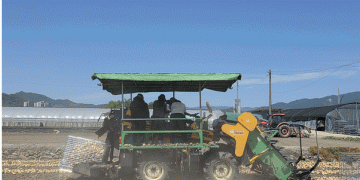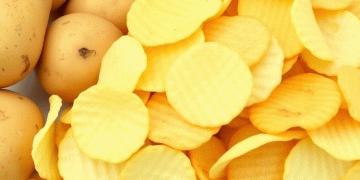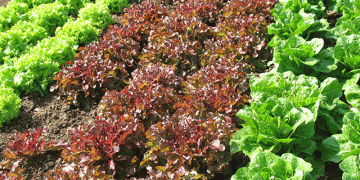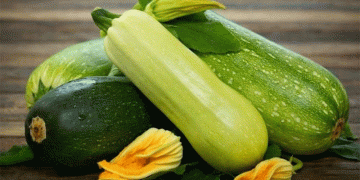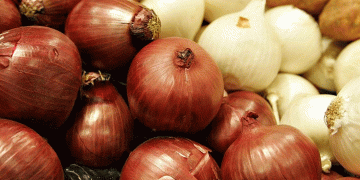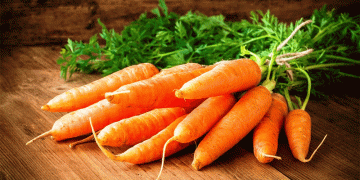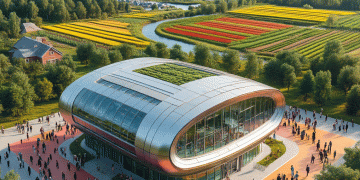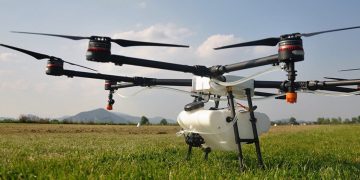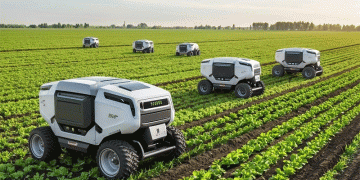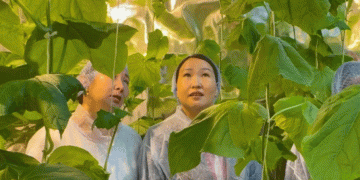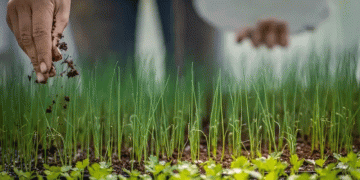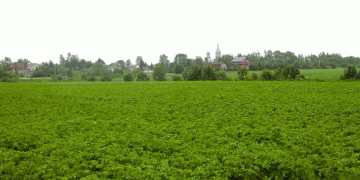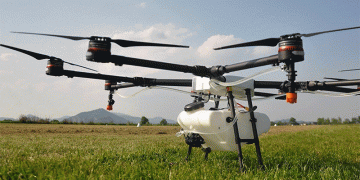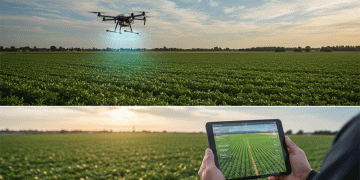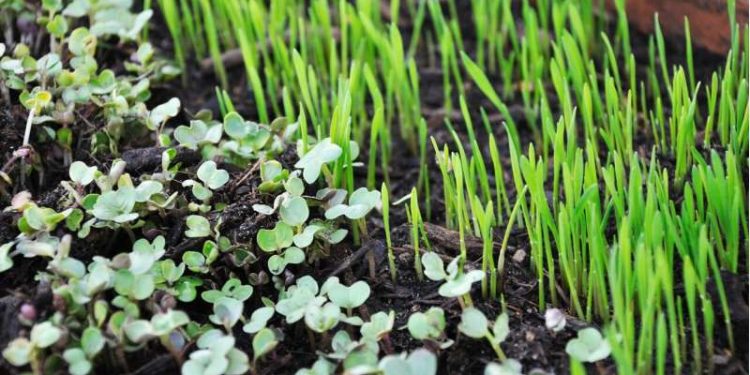Feeding 8 billion humans requires ingenuity and innovation. Zhenlei Xiao is an associate professor in residence in the UConn’s College of Agriculture, Health and Natural Resources Department of Nutritional Sciences and her research focuses on tiny, nutrient-dense, and fast-growing microgreens, which could help in feeding the growing population, both on Earth and potentially in space.
Microgreens can include a wide variety of vegetables and herbs, such as arugula, broccoli, beets, and even sunflower sprouts. These microgreens are also well-suited for urban agriculture, which could play an important role as arable land is increasingly squeezed by development. More than four billion people live in cities, accounting for roughly 55% of the world’s population.
This number is expected to rise to an anticipated 7 in 10 people living in urban settings by 2050. One way to make food systems in future cities more sustainable is through urban agriculture—growing food near where it will be consumed.
Xiao met with UConn Today to share her expertise and discuss how microgreens fit into urban agriculture and sustainable food systems we need now and moving forward into the future.
What got you interested in studying microgreens?
When I was a Ph.D. student at the University of Maryland, we collaborated with the USDA Agricultural Research Service in studying the nutritional composition of microgreens for the first time. Our paper published in 2012 was the first publication on the nutritional quality of microgreens.
We examined the concentrations of vitamins and phytonutrients in 25 varieties of microgreens and compared them to the data of their mature plants in the USDA Nutrient Database (now called FoodData Central), and surprisingly found out that microgreens were much more nutrient-dense, compared to their mature counterparts.
After that, there were many more studies conducted and published. Even NASA started microgreen studies a couple of years ago, because they want to grow microgreens in space to supply those highly nutrient-dense food items to the astronauts, which is very exciting.
What are some of the benefits of microgreens and the qualities that make them appealing for urban agriculture?
High nutritional quality is the number one benefit of microgreens, but there are so many other good attributes; for example, the sensory aspect. Microgreens can provide a wide array of colors, shapes, textures, and flavors. Even though they’re tiny in size, they are strong in color and flavor. They can be used in different kinds of food, like a salad, soup, or sandwich, or just use them for the decoration of the dishes.
There are a couple of reasons why microgreens are suitable for sustainable urban agriculture. First, they have a very short production cycle. Generally, microgreens can be harvested within seven to 21 days, which is much shorter compared to mature leafy greens. Second, they are very easy to grow and don’t need fertilizers or pesticides due to the short growth period. Third, the growing system is quite easy to set up. We can easily grow them at home, too.
As we know, agricultural soils are becoming so depleted which could impact the growth and nutrition of the food that is grown. Fortunately, there are many other ways we can grow microgreens, such as hydroponic, aeroponic, and aquaponic.
In our recent paper in Current Opinion in Food Science, we mentioned hydrogels could be the next generation of growth substrate for microgreens due to the high water-holding capacity, so farmers only need to water them once in the beginning. We’re doing more research on improving the porosity of the hydrogel, so it could support the healthy growth of the roots and plants.
How can microgreens fit into sustainable food systems and urban agriculture?
Sustainable food systems and urban agriculture are the directions we need to go in as a society! First, urban agriculture can supply fresh produce to the local community. Second, urban agriculture can provide more opportunities for local farmers where they can grow more on a small acreage of land, using community gardens, rooftops, abandoned plant facilities, etc. Third, urban agriculture can significantly reduce the carbon footprint by reducing post-harvest transportation, making it more sustainable.
There are a lot of amazing things happening with urban agriculture right now. For example, with vertical indoor farming, we could produce much more food on the same amount of land. With the same amount of food, we can provide higher nutritional quality with microgreens, which makes microgreens great candidates for urban agriculture. In addition, the shelf life of microgreens is normally very short due to their tender and delicate characteristics.
Therefore, it could perfectly fit into the urban agriculture production system with a much shorter turnaround cycle since it is grown right where it will be eaten. Furthermore, microgreens can be grown from a very small scale to a much larger scale with advanced technologies, which makes it suitable for growers of any size in urban areas.
There are some emerging indoor farming companies using new technologies (like A.I.) to practice sustainable agriculture. For example, aeroponic growing system only uses around 10% of irrigation water, compared to the traditional soil-grown produce, which is quite amazing from a sustainability aspect.
Currently, a lot of the small local farmers are growing microgreens in the traditional way (trays, shelves, and lighting). With the support of USDA and UConn Extension, it could be possible to help small-scale farmers start using highly efficient technologies to produce safe, fresh, and nutritious microgreens for the local community in a sustainable way.
More information: Muyao Du et al, Advances and emerging trends in cultivation substrates for growing sprouts and microgreens toward safe and sustainable agriculture, Current Opinion in Food Science (2022). DOI: 10.1016/j.cofs.2022.100863
